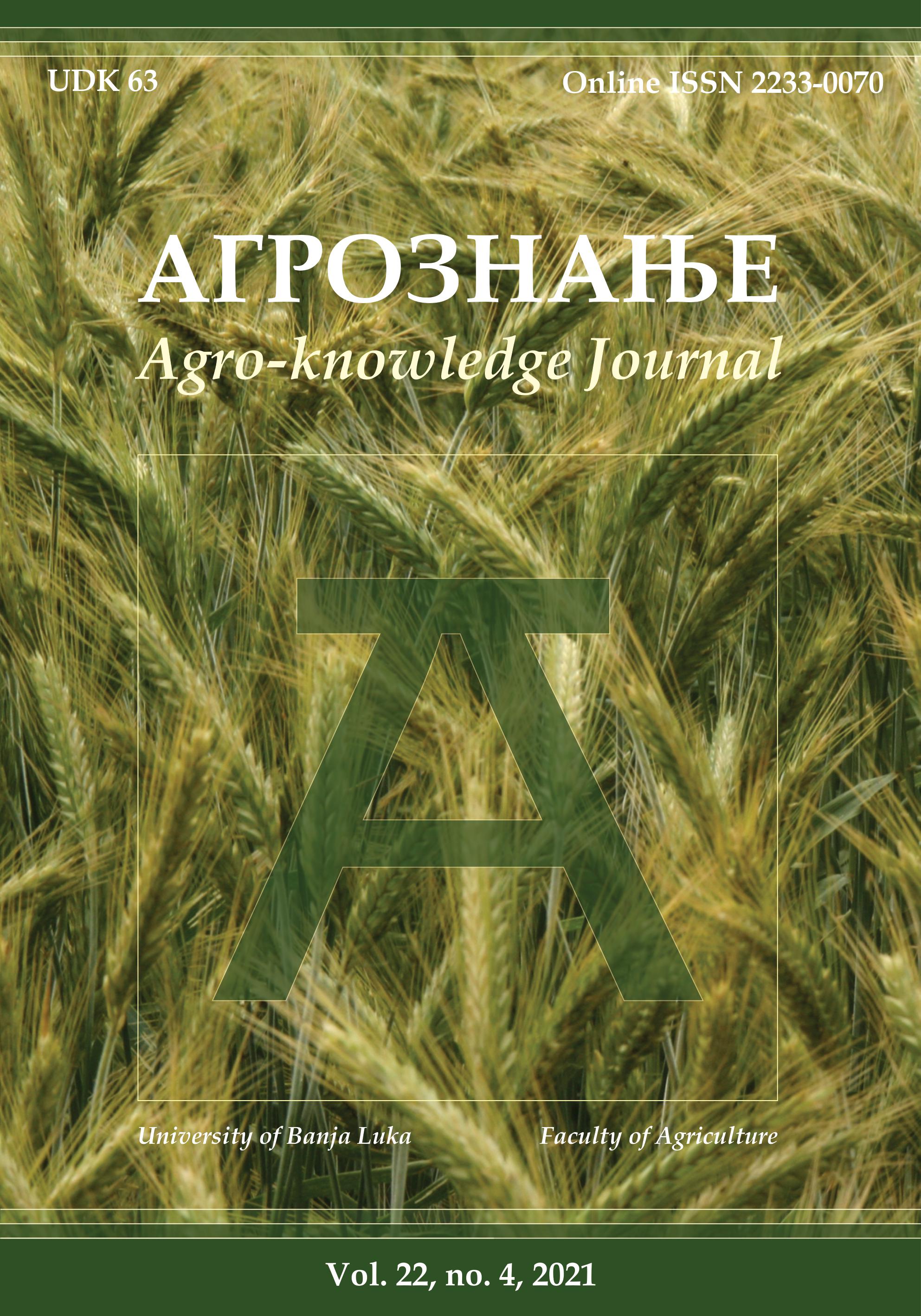Antioxidant capacity of wild-growing orange mullein (Verbascum phlomoides L.)
Антиоксидативни капацитет дивље дивизме (Verbascum phlomoides L.)
DOI:
https://doi.org/10.7251/AGREN2104127KAbstract
Orange mullein is a biennial plant belonging to the figwort (Scrophulariaceae) family. The vivid yellow flowers are arranged in spikes located on the top of the stem. It is a drought and cold-tolerant plant requiring much sunlight that grows on pastures, roadsides, and in dry weed associations. The aim of this study was to assess the effect of different solvents (water, 70% acetone, 70% methanol, and 70% ethanol) on the assessment of antioxidant capacity of leaves and flowers of orange mullein. Total phenolics are higher in the leaves and reach a value of up to 15.70 mg of gallic acid per one g of dry leaf weight, while flavonoids are more dominant in flowers and reach a value of 5.82 mg of quercetin per one g of dry flower. Correlation was performed between total phenolics, total tannins, total flavonoids, and antioxidant tests. It is the flavonoids that are mainly responsible a the high antioxidant activity establishing a correlation with all the tests performed, including FRAP, ABTS, DPPH, total antioxidant activity, total reduction capacity, and NBT reduction test.
Key words: orange mullein, polyphenols, antioxidant capacity, Kopaonik

